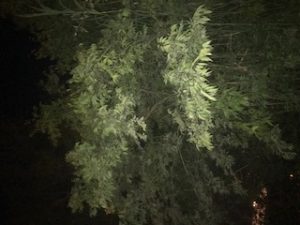Daniela Fernandez
The city of Austin, TX is a city full of all kinds of environmental opportunities available to the public whether it be to volunteer, work to make better, or simply enjoy the nature the city has to offer. The nature around the city only keeps growing and becoming more lush as city officials make the nature more valuable and worthy of conservation. Conservation of the city’s nature has become a vital part of life for those living and working here and sharing in the wonderful nature it has to offer.
One of the most visited places daily in the city is Town Lake Trail on Lady Bird Lake, which is full of runners, joggers, or simply dog lovers or anybody who feels like taking a stroll to enjoy the beautiful views and atmosphere. Town Lake has changed drastically through the years, being at first dry and lacking any green whatsoever (The Trail Foundatin, 2015). In 2011, there was a plan put in place by volunteers of the Austin Community Tree Program. The volunteers planted two hundred and forty new trees along the trail in order to reduce the Urban Heat Island Effect on the city, which can basically be reduced by promoting the planting of more trees along private property to shade sidewalks (States News Service, 2011). This is yet another example of the city of Austin bettering the environment and nature it holds.
The trail is now full of all sorts of lush trees and plants that surround it, making it beautiful. There are a vast amount of trees that grow on the trail, to many to count, especially because of the fact that the trail goes on for miles. A very popular tree that is found along the trail and may as well be the most well-known tree is the Cypress Tree. There are various found along the trail, and one of them attracts paddle boarders or canoers along the lake for shade or just to enjoy its beauty and grandness. There are many other kinds of trees found along the trail and I am unable to name all of them.
I have been observing the trees along Town Lake since the beginning of this semester from up close and afar as well. I can see the trail from my apartment balcony and would observe the trees every morning plus visiting up close and walking the trail in order to observe the trees up close and watch if and how they changed. Over the whole semester there has been little change in the trees. Recently the leaves on some of the trees have begun turning different colors and some have begun to fall due to the change of seasons, but most of the trees are still green and lush. Very little change has occurred.
Something else I noticed while on the trail that reminded me of this environmental science course is the abundance of invasive species. All along the trail are very tall and thin plants that grow almost as tall as the trees they invade. The species is featured in the photos found in this blog post but I am unable to identify the name of the species. Wherever the invasive species is located, there are signs that read “Invasive species plant control” and that EPA-approved herbicide application is planned to be put in at the location. This is proof of how much the city of Austin cares about its environment and nature, it is taking matters into its own hands and officials have decided to spray pesticide control in attempt to suppress the invasive species and lower the chances of the beauty of the trail being diminished by these species.
Type of tree.
Tree starting to look a bit bare.
Bare plant.
Invasive species located around trail.
Bibliography
Butler Trail at Lady Bird Lake: Urban Forestry and Ecological Restoration. (2017, February 14). Retrieved October 09, 2017, from https://thetrailfoundation.org/2015/09/01/butler-trail-at-lady-bird-lake-urban-forestry-and-ecological-restoration/
http://www.lexisnexis.com.ezproxy.stedwards.edu/hottopics/lnacademic/?verb=sr&csi=8058&sr=HEADLINE(NEW+TREES+TO+BE+PLANTED+IN+EAST+CESAR+CHAVEZ+NEIGHBORHOOD+TO+REDUCE+URBAN+HEAT+ISLAND+EFFECT)%2BAND%2BDATE%2BIS%2B2011




